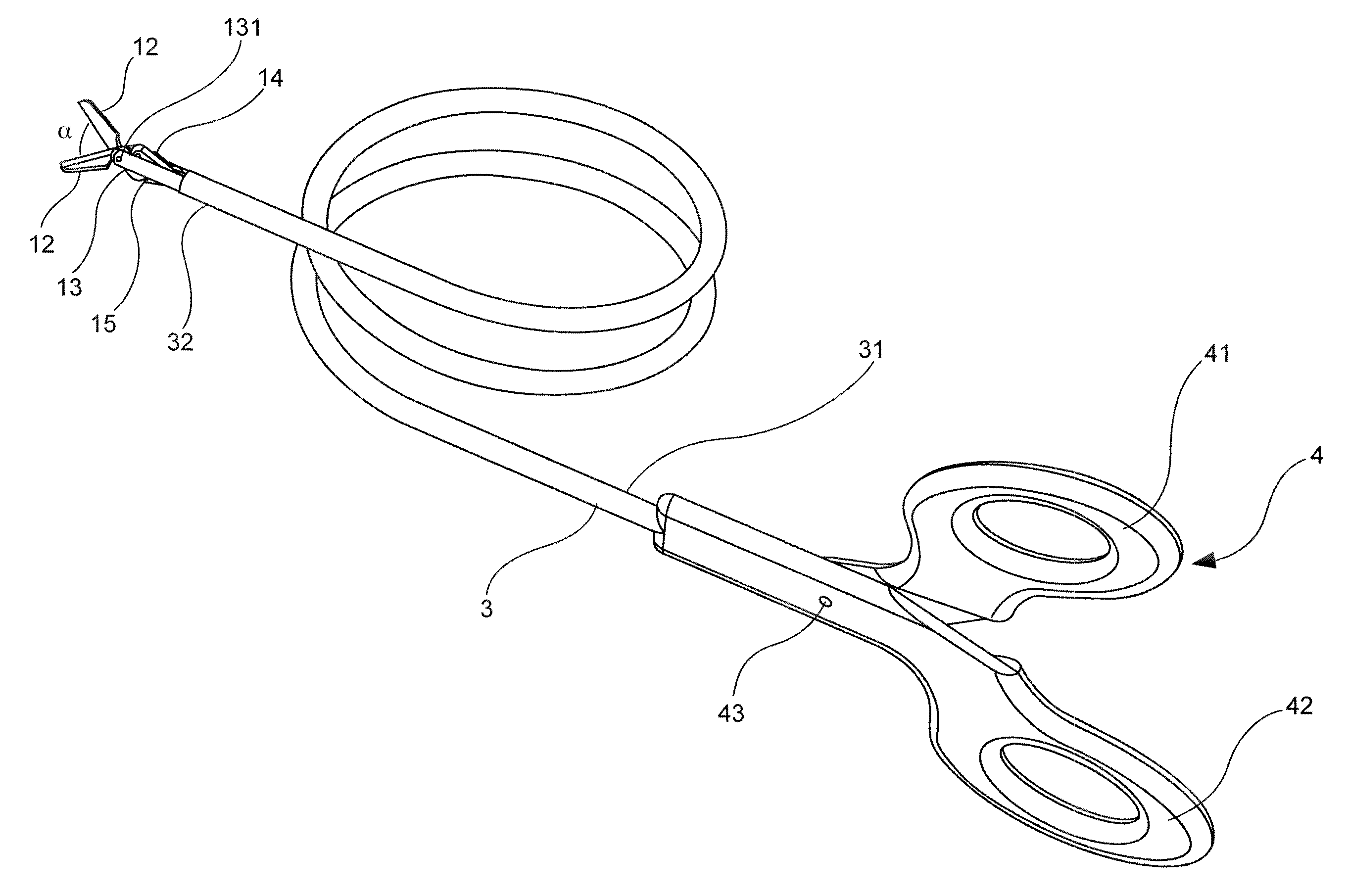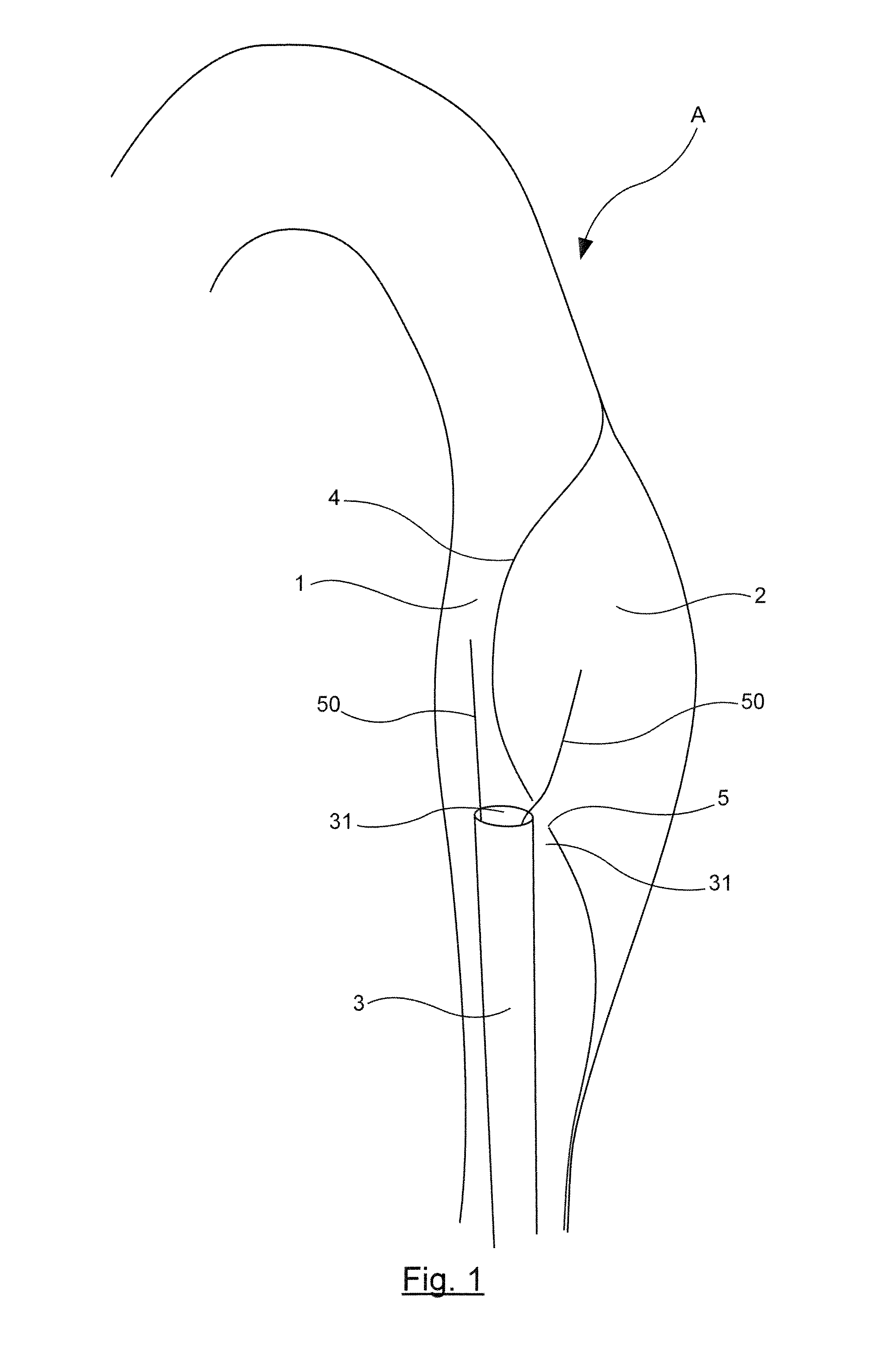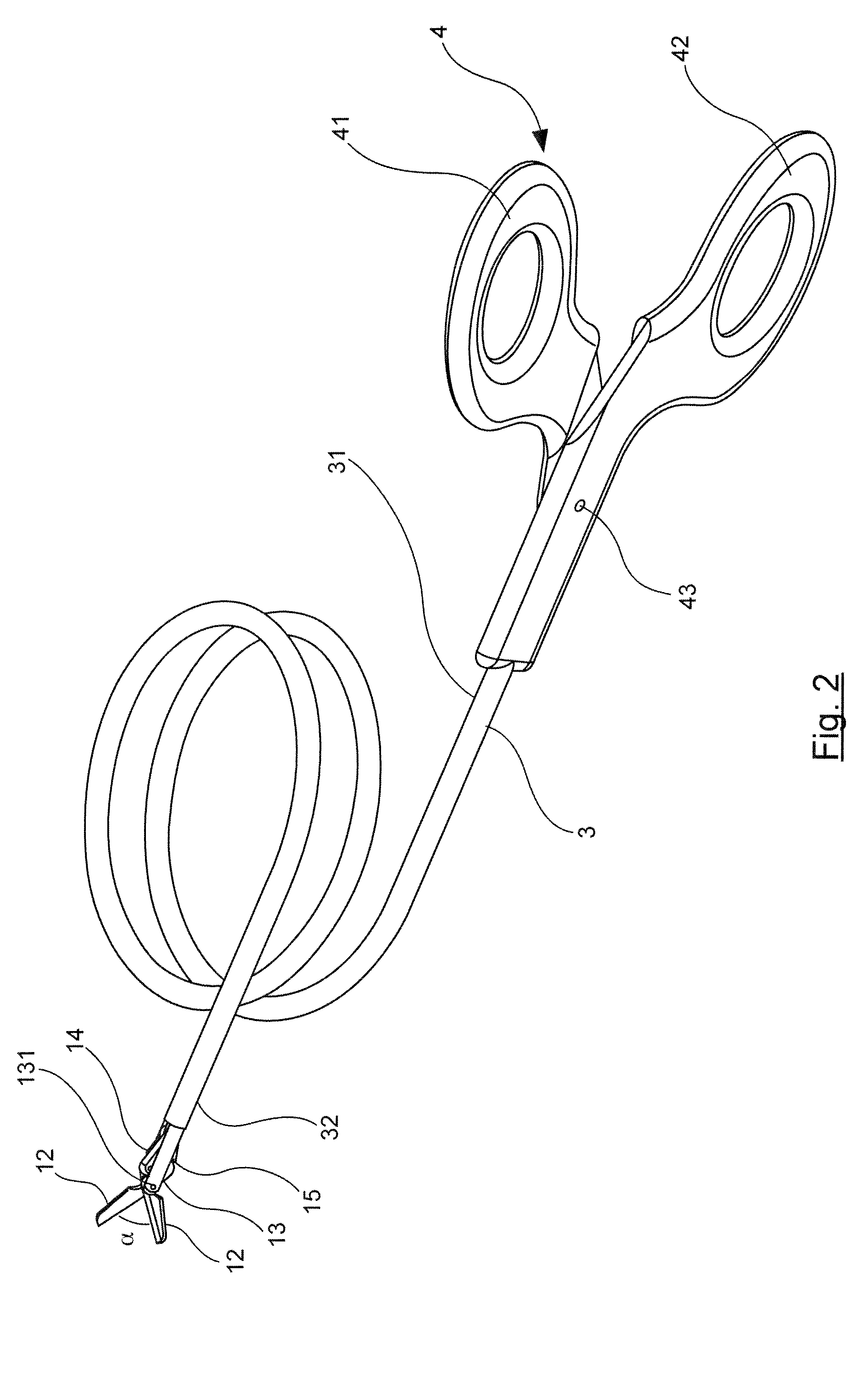Cutting device for endovascular surgery
a cutting device and endovascular technology, applied in the field of endovascular surgery, can solve the problems of reducing the survival rate of patients in the short and long term, reducing the efficiency of endovascular surgery, so as to reduce the invasive nature of operations and extend the indications of endovascular surgery.
- Summary
- Abstract
- Description
- Claims
- Application Information
AI Technical Summary
Benefits of technology
Problems solved by technology
Method used
Image
Examples
first embodiment
a) EXAMPLE OF A FIRST EMBODIMENT
[0054]FIGS. 3 and 4 show a detailed view of the cutting blades of a first embodiment according to the invention, in the open and closed positions respectively. The hidden parts are shown in dashed lines. Each of the cutting blades 11, 12 has a rounded distal end 111, 121, and a proximal end 112, 122. This rounded form means that the cutting blades can be inserted in the closed position without creating any lesions in the inside wall of the vessels inside which the device passes. It also makes it possible to actuate the cutting blades safely within a vessel. This characteristic is particularly important when operating on a patient who already has intravascular lesions. Each blade has a cutting edge 113, 123 used to cut the vascular wall, even when a fibrous scar tissue has begun to develop. Blades are hinged to each other by a hinge pin 131, that also holds them to the attachment part 13. Each blade 11, 12 is hinged at its proximal part to a connecting...
second embodiment
b) EXAMPLE OF A SECOND EMBODIMENT
[0070]According to this second embodiment shown in FIG. 6, the cutting blades 101, 102 are solid and slide along the guide rods 500 by means of the rings 191, 192. The thickness of the rings is about 2 mm, their outer diameter is approximately 2 mm.
[0071]Operation and articulation of the cutting blades with the connecting rods 14, 15, the attachment part 13, the cable 6, the catheter 3 and the control element 4 are identical in all respects with the example described in section 5a). The part dimensions are identical to the first embodiment.
PUM
 Login to View More
Login to View More Abstract
Description
Claims
Application Information
 Login to View More
Login to View More - R&D
- Intellectual Property
- Life Sciences
- Materials
- Tech Scout
- Unparalleled Data Quality
- Higher Quality Content
- 60% Fewer Hallucinations
Browse by: Latest US Patents, China's latest patents, Technical Efficacy Thesaurus, Application Domain, Technology Topic, Popular Technical Reports.
© 2025 PatSnap. All rights reserved.Legal|Privacy policy|Modern Slavery Act Transparency Statement|Sitemap|About US| Contact US: help@patsnap.com



